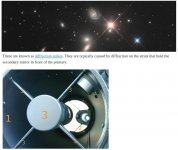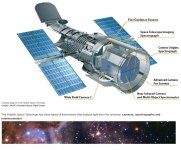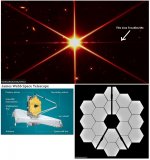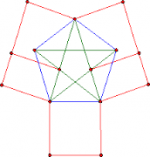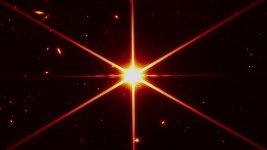When and by whom did this assumption come to be?
I'm afraid your question tokens have run out for tonight!
It's half past midnight here and I'm soon of to bed to dream of higher dimensions!
In physics, it is normally assumed that a system has some initial state from which it evolves forward i.e. a singularity.
That should have read "e.g. a singularity".
We were talking about the initial state of the universe- by all counts it emerged from singularity where where descriptions of space and time don’t exist. You are describing the universe after the end of the singularity.
To say that the universe emerged from a singularity is to say it had a single, defined starting point.
Feynman's sum over histories does away with the need for a special initial state.
In quantum creation, the universe is thought to have appeared spontaneously, starting off in every possible way, like bubbles of steam in boiling water.
Many tiny 'bubbles' were fated to expand and collapse again while still of microscopic size.
However, our particular 'bubble' started expanding at an ever-increasing rate, becoming a universe in a state of inflation.
Apparently, we are all just products of the quantum fluctuations of space.
Hawking said the theory of quantum creation was 'testable', and I presume physicists are working on it.
Feynman's sum over histories does away with the need for a special initial state.
In quantum creation, the universe is thought to have appeared spontaneously, starting off in every possible way, like bubbles of steam in boiling water.
Many tiny 'bubbles' were fated to expand and collapse again while still of microscopic size.
However, our particular 'bubble' started expanding at an ever-increasing rate, becoming a universe in a state of inflation.
Apparently, we are all just products of the quantum fluctuations of space.
Hawking said the theory of quantum creation was 'testable', and I presume physicists are working on it.
I dunno. I read 'The First Three Minutes' which was updated about 25 years or so after the initial publication and its still the best introduction and explanation as to how the Universe began. I know when physicists start talking about 10 (or is it 12) dimensions, string theory and quantum vacuum fluctuations, some of their number roll their eyes back - Sabine Hossenfelder for one. Michael Mann (the climate scientist) is a theoretical physicist and remarked a while back that their was real scientific rigour being applied in climate science and contrasted it with the intellectual leaps of faith being taken in theoretical physics and cosmology.
I dunno either. Does anyone know? It's all conjecture!
Apparently, Feynman's methods allow calculation of quantum probabilities which lead to the concept of the spontaneous quantum creation of the universe - where quantum fluctuations lead to the creation of tiny universes out of nothing.
Just 12 years ago, Hawking said that M-theory is the unified theory that Einstein was hoping to find. The theory would have to be confirmed by observation, and that's the role of the experimental particle physicists.
Apparently, Feynman's methods allow calculation of quantum probabilities which lead to the concept of the spontaneous quantum creation of the universe - where quantum fluctuations lead to the creation of tiny universes out of nothing.
Just 12 years ago, Hawking said that M-theory is the unified theory that Einstein was hoping to find. The theory would have to be confirmed by observation, and that's the role of the experimental particle physicists.
When and by whom did this assumption come to be?
You misunderstand, and that's why it was necessary to change my i.e. to an e.g.!
It is just how physics works. No one person at any one time made an "assumption" of how it should work.
There is normally an initial state, or starting point, in the application of the laws of physics. Think of throwing a ball in the air. It is simply sensible to describe its motion from the initial point where it leaves the thrower's hand.
What makes you think I misunderstand? It is clear to me that our entrance into existence is wholly unknown and as such subject to and therefore ruled by conjecture.
I have made that point clear from the outset, so no misunderstanding there.
I'll be glad to take a rest from discussions on the origin of the universe! 👍
I'll be glad to take a rest from discussions on the origin of the universe! 👍
A new image from Hubble shows a jet of gas being ejected from a very young star.
The supersonic jet collides with the gas and dust in the surrounding nebula forming the colourful, wispy knots of emission at the bottom right of the image, known as Herbig-Haro objects.
https://astronomy.swin.edu.au/cosmos/H/Herbig-Haro+Object
Just something else that I've discovered through my googling, and which I'd like to share with others.
The supersonic jet collides with the gas and dust in the surrounding nebula forming the colourful, wispy knots of emission at the bottom right of the image, known as Herbig-Haro objects.
https://astronomy.swin.edu.au/cosmos/H/Herbig-Haro+Object
Just something else that I've discovered through my googling, and which I'd like to share with others.
Attachments
If you look at Galu's "outburst" image very observantly, you will notice cross-shaped lines around stars.
These are called Diffraction Spikes, and are common with reflecting telescopes due to the cross-hair struts that support the secondary mirror.
James Webb (Hurray!) has just released a picture now the 18 mirrors are aligned.
There's more going on with this one. We have hexagonal diffraction spikes, which is unsurprising.
But also a horizontal line, which is a bilateral 2-fold or a 4-fold symmetry. Presumably coming from the asymmetric layout of the 3 supporting struts to the secondary mirror.
Has NASA messed up here and produced a Fault? Should the struts have been at 120 degrees to overlap a three-fold to the six-fold pattern. Or is it a Feature?
An interesting symmetry problem. Enquiring minds want to know the answer. 🙂
These are called Diffraction Spikes, and are common with reflecting telescopes due to the cross-hair struts that support the secondary mirror.
James Webb (Hurray!) has just released a picture now the 18 mirrors are aligned.
The star used for the test image released on Wednesday is nothing particularly special, just "a generic, anonymous star" with the right level of brightness.
Webb is seeing the star at a wavelength of two microns. This is in the infrared; it's not light that would be seen by the human eye
The red colouration is for contrast.
The "spike" structures were a function of the design of Webb's primary mirror, explained Mark McCaughrean from the European Space Agency (Esa).
https://www.bbc.co.uk/news/science-environment-60771210"The shape of those 18 hexagons imprints a faint diffraction pattern that makes bright stars look like spiky snowflakes - this isn't a problem for the science, but will give Webb images a very distinctive look," he told BBC News.
"Indeed, the fact that we can see those spikes so crisply also confirms that the mirrors have been perfectly lined up - this is brilliant news."
There's more going on with this one. We have hexagonal diffraction spikes, which is unsurprising.
But also a horizontal line, which is a bilateral 2-fold or a 4-fold symmetry. Presumably coming from the asymmetric layout of the 3 supporting struts to the secondary mirror.
Has NASA messed up here and produced a Fault? Should the struts have been at 120 degrees to overlap a three-fold to the six-fold pattern. Or is it a Feature?
An interesting symmetry problem. Enquiring minds want to know the answer. 🙂
Attachments
That's interesting Steve. Diffraction huh? I'd never even considered why stars are star-shaped!
As a keen observer of numbers, you may be interested in the most common representation of a star - the five pointed star.
https://justphilomath.wordpress.com...ped/?msclkid=168dfc7ea5e411ec9cc08e96fc217732
Apparently, the five pointed star is an embodiment of the Fibonacci series, the golden ratio and the golden rectangle.
Cue the pentagram!
As a keen observer of numbers, you may be interested in the most common representation of a star - the five pointed star.
https://justphilomath.wordpress.com...ped/?msclkid=168dfc7ea5e411ec9cc08e96fc217732
Apparently, the five pointed star is an embodiment of the Fibonacci series, the golden ratio and the golden rectangle.
Cue the pentagram!
Attachments
Name the higher dimensions
Even tho i am no Stephen hawking but i will try my best
Ronny
Tony
Sonny
And Michael Jackson
There you have it
Four space dimensions
Even tho i am no Stephen hawking but i will try my best
Ronny
Tony
Sonny
And Michael Jackson
There you have it
Four space dimensions
I do not see some FIVE thing in this JWST in full focus image.I've singled out Webb's fully focussed image from your link to provide additional emphasis, Steve.
No one said the JWST image was five pointed!
I clearly spoke of "the most common representation of a star".
I was bringing the JWST image into emphasis, not my post on five-pointed stars.
I clearly spoke of "the most common representation of a star".
I was bringing the JWST image into emphasis, not my post on five-pointed stars.
P.S. By "most common representation of a star", I meant the most common way a star is represented in a drawing i.e. in a work of art.
I wasn't referring to photographic images.
I wasn't referring to photographic images.
My mistake :-(P.S. By "most common representation of a star", I meant the most common way a star is represented in a drawing i.e. in a work of art.
I wasn't referring to photographic images.
Name the higher dimensions
Ronny
Tony
Sonny
And Michael Jackson
There you have it
Four space dimensions
What about The 5th Dimension?
Ron
Billy
Marilyn
Florence
and Lamonte
Attachments
- Status
- Not open for further replies.
- Home
- Member Areas
- The Lounge
- What is the Universe expanding into..

